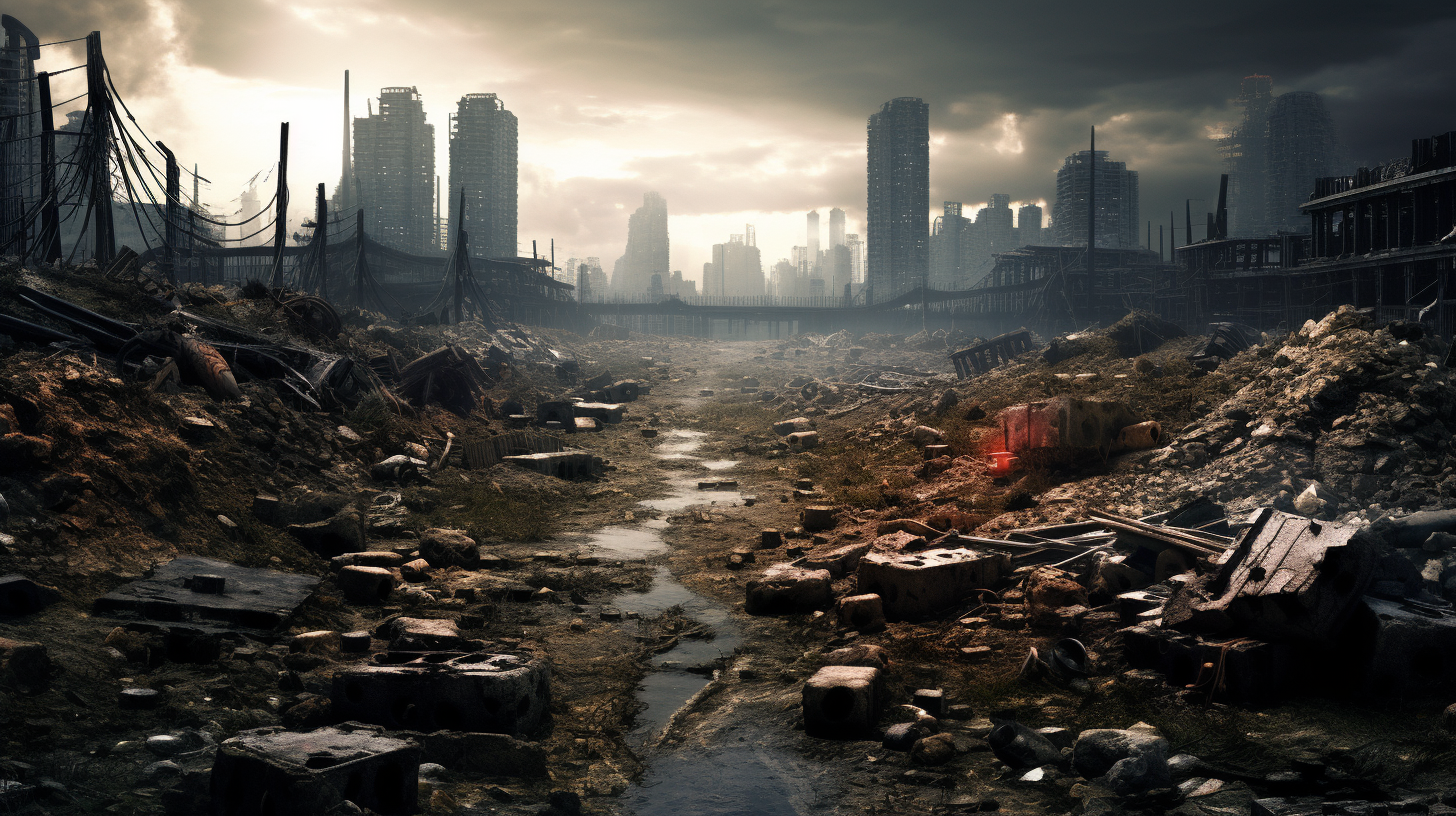In a world where skylines are no longer punctuated by the glittering peaks of skyscrapers, but by the jagged edges of decay and rot, humanity treads a new path. Our survival, a testament to adaptability, is colored by the ruins we now call home. But in the midst of this post-apocalyptic tableau, resilience has become our creed, and sustainability our most potent ally.
Amidst the destruction wrought by our own environmental neglect, vestiges of the old world provide the foundation for new societies. These emerging communities, forged in the crucible of necessity, are more than a patchwork of salvaged metal and repurposed technology; they are the incubators of a novel way of living that encapsulates eco-consciousness at its core.
Consider the tale of New Haven, a city built from the corpses of abandoned vehicles and crumbling infrastructure—a vivid illustration of the stark reality previous articles like ‘In the Shadows of Giants – The Struggle Beneath Towering Trashscapes’ have painted. Drawing on this narrative, we see how the survivors gather not just materials but ideas, weaving together a lifestyle that’s lean on resources yet rich in community spirit.
Energy, once the gilded commodity of modern civilizations, has been reborn from the ashes of its own excess. Solar arrays, jury-rigged from smartphones and discarded monitors, are a common sight, clinging to the sides of make-shift dwellings. Wind turbines, cobbled together from scrap metal and car parts, slap and hum in the breeze, providing enough power to sustain the bare necessities.
Food scarcity initially drove us to our knees. However, in the wake of desperation, innovation crept in. Hydroponic gardens drape the interiors of dilapidated shopping malls, while mushroom farms take root in the once-opulent theatres. In these unlikely Edens, communities converge, sharing not just meals but the collective responsibility of nurturing these green havens.
Water, the elixir of life, once wasted with impunity, now gathers praise with each precious drop that’s conserved. Filtration methods improvised from detritus, plastic bottles reborn as rain catchers, and dew-collection systems stand testament to our newfound worship of hydration. Water is not just life; it became the currency of cooperation, a liquid asset fueling the solidarity of survivors.
In this landscape, education has morphed far beyond the rigid curriculums of our forebears. Children learn not from outdated textbooks but through hands-on experience of building, growing, and sustaining life. Their playgrounds are the laboratories of survival where science serves salvaging and ingenuity is the new intellectual currency.
And yet, as the new societies flourish in the cradle of cautionary tales, the scars of the past are impossible to ignore. The air carries the latent hum of a lingering curse—the whispers of climate calamity. Seas murmur tales of rising tides and acid rain patters out the rhythm of past transgressions. Amidst these reminders, the irony stings sharply; had we heeded these warnings sooner, our present could have been vastly different.
In this tableau of resilience and rebirth, the absence of hope is poignant. For we have glimpsed the consequences of our actions too late, painting a picture too grave to reverse. These nascent societies stand as both monuments to human adaptability and memorials for a defunct world—our lost chance at redemption. But let this chronicle serve not as an eulogy but as a poignant parable of persistence. For in the harshest of realities, beauty and community thrive in the cracks of calamity, a truth both bitter and inspiring.
In the end, our tale is not of defeat but of endurance, a narrative of humans clinging steadfast to a world they once threatened but now cherish with a fierce, protective love. Here, among the ruins, we forge on—not with the falsehood of hope, but with the unyielding promise of our own resilient spirit.
